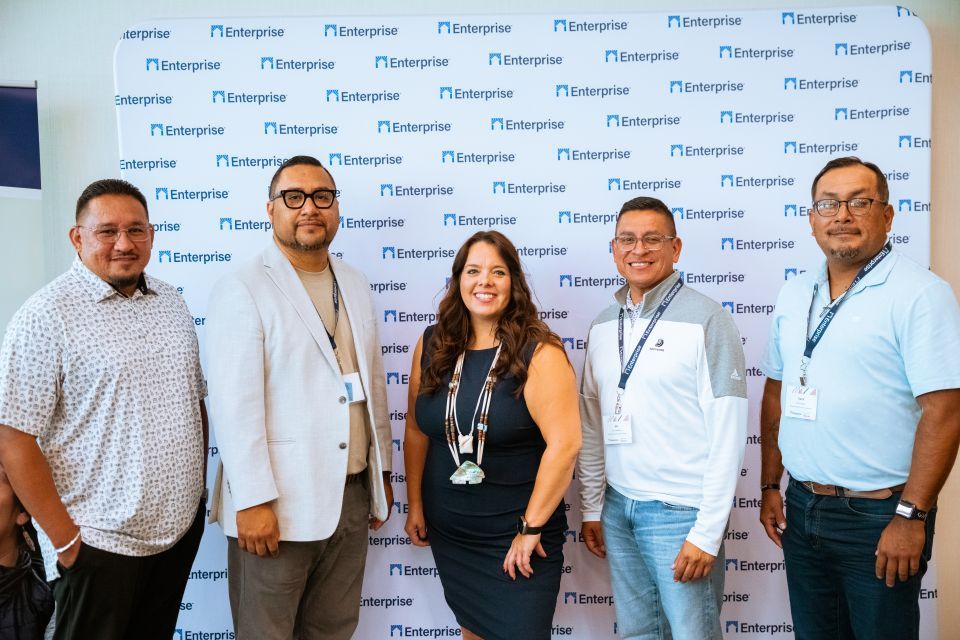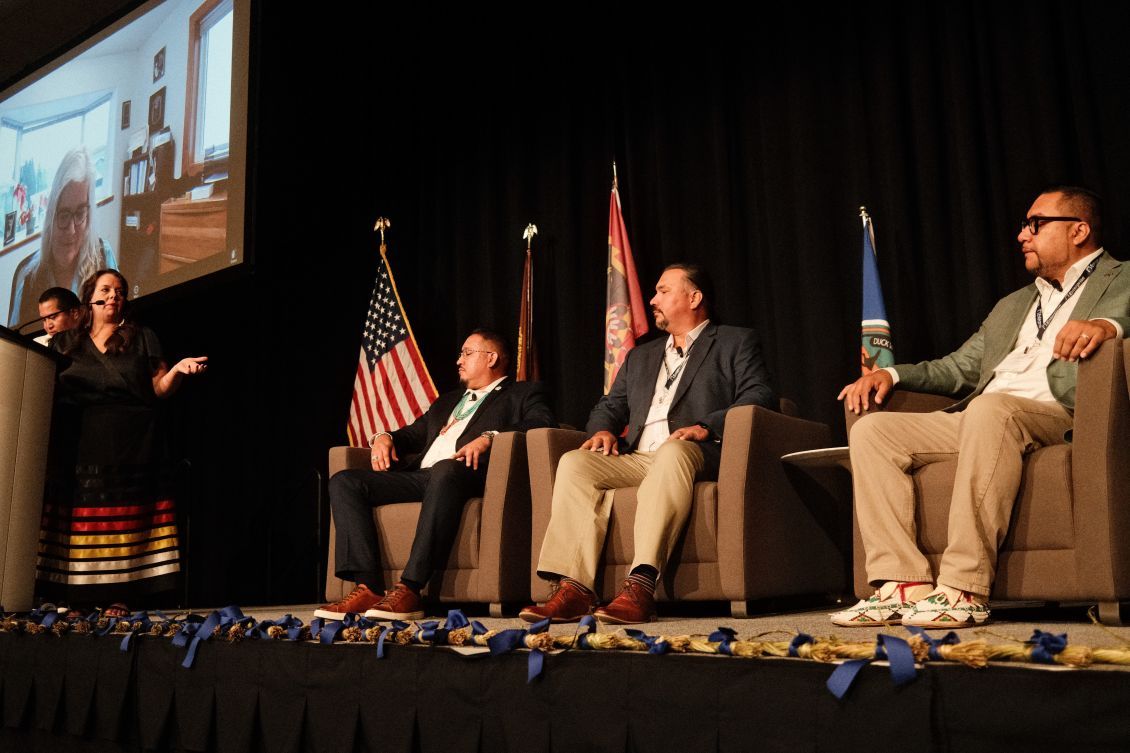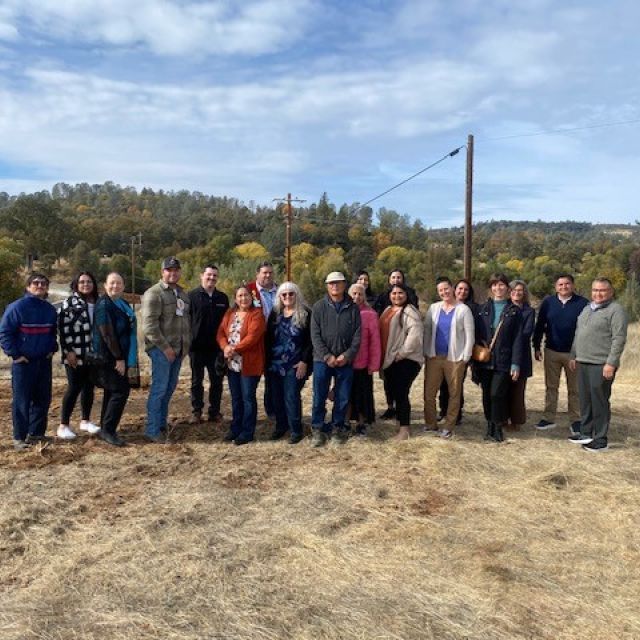Sandra Witherspoon, chairwoman of the Grand Traverse Band of Ottawa and Chippewa Indians, traveled from Northern Michigan to Boise, Idaho, to find new ideas and inspiration. “There’s a huge and growing need for housing where I live. I came here to learn about ways to finance and create more homes.”
Chairwoman Witherspoon, along with other members of her tribe, joined close to 300 people who converged in Boise in late August for the National Tribal Housing Ecosystem Summit. The event, the first of its kind, brought together Tribal, government, finance, and community leaders from across the country to inspire new ideas, partnerships, and investment opportunities to support Tribal housing development, homeownership, and economic and workforce development.
The gathering — featuring testimonials and perspectives from tribes and individuals from diverse geographies and backgrounds — opened with a Posting of the Colors flag ceremony including song, prayer, and acknowledgements of the land led by the local Tribes based in what has become Idaho - the Nez Perce from the north, and the Shoshone Paiute and Shoshone Bannock Tribes - whose ancestral home is in the Boise valley. The wide-ranging discussions focused on a common theme: a desire to create homes and invest in communities across Indian Country all while building upon the strength of Native American history, culture, and values.
Beginning with the voices of today's Tribal leadership, an opening panel featured Tribal leaders from across the country including J. Garret Renville, Tribal Chairman, Sisseton Wahpeton Oyate; Tehassi Hill, Tribal Chairman, Oneida Nation; Kevin C. Montoya, Lieutenant Governor, Pueblo of Santa Ana; and Jacqueline Pata, First Vice President, Tlingit & Haida Indian Tribes of Alaska. "Each leader shared wisdom from the past and vision for the future to ground us in focus for the days ahead," said Tonya Plummer, an enrolled tribal member of Assiniboine, Dakota, and Cree heritage and director of Enterprise’s Native American Housing Programs.
“We are all here in whatever capacity we represent because we collectively believe that home is a place of pride and power and belonging. This is especially true for our tribal communities. You are all part of the solution collectively.”
Tonya Plummer
Shaun Donovan, Enterprise’s CEO and president, noted that this year marks a century since the passage of the Indian Citizenship Act and the “decades-long civil rights struggle that has taken place” since then. “Enterprise’s charge is in addressing systems change and helping to unwind the legacy of that systemic racism, which is at the core of the work that we do,” Donovan said.
Strengthening a Housing ‘Ecosystem’
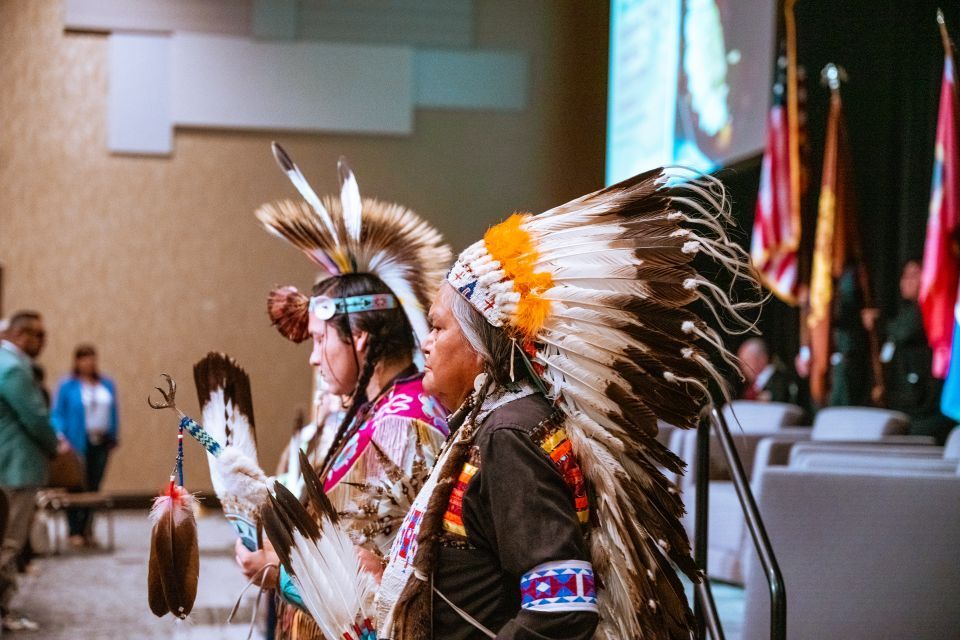
Because of that legacy, Native Americans on tribal lands endure some of the most acute housing needs in the United States. Native communities face high poverty rates and low incomes, overcrowding, lack of plumbing and heat, and unique development issues. Despite the growing need for homes, federal investments in affordable housing on tribal lands remain insufficient.
“We experienced, as Native Americans, a very tattered social contract in this country in which our rights are constantly up for debate,” said Lakota Vogel, executive director of Four Bands Community Fund, a Native CDFI, and an enrolled member of the Cheyenne River Sioux Tribe “We're all here to broaden this framework and how we talk about our people.”
Vogel, Plummer and other speakers focused on changing the narrative by working to strengthen a Tribal housing ecosystem, with core tenets targeting demand, finance, construction and development, and social and emotional infrastructure. The goal: a strong tribal housing ecosystem that fosters housing development and finance mechanisms that spur “economic self-sufficiency and self-determination for Indian tribes and their members,” Plummer said, stressing that four key outcomes — all centered around housing — will build and reinforce stronger families, industries, communities and economies.
Undoing Bureaucracy and Encouraging Investment
Ravynn Nothstine, senior policy advisor at the White House Council on Native American Affairs, spoke about the role of her work to increase opportunities among tribal communities. By breaking down silos among departments and agencies, the council aims to create momentum for “better outcomes for Indian Country,” Nothstine said.
An executive order enacted last December by the Biden administration seeks to remove some of the bureaucracy that tribal nations have grappled with when securing federal funding. “If these are implemented the way they’re intended, [it] will create the environment for the next era of tribal self-determination, one where the federal government moves out of the way and reinforces the platform for tribal leadership and sovereignty,” said Nothstine, an enrolled member of the Native Village of Wales (Alaska).
Investors and leaders in philanthropy also stressed their commitment to invest in Indian country. Flor Tolley, vice president at the Wells Fargo Foundation, pointed to a recent grant focused on promoting homeownership in rural and Native communities, which has created more than 125 new homes in South Dakota.
Forging Public-Private Partnerships
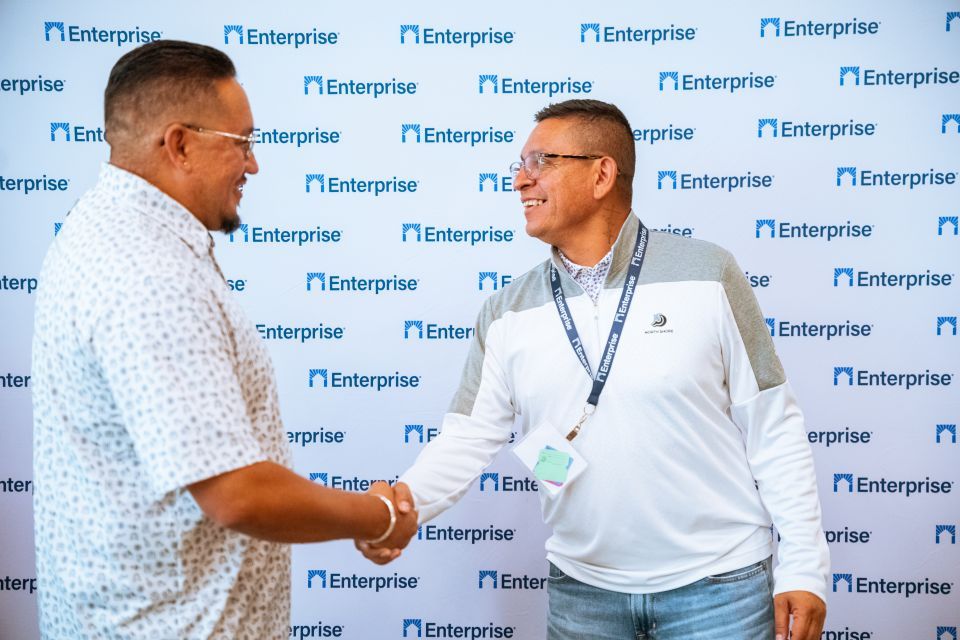
From the Tlingit & Haida Housing Authority in Alaska to the Oneida Nation of Wisconsin and the Tuolumne Economic Development Authority serving the Tuolumne Band of the Me-Wuk Indians, several tribes shared successes and presented their cases for investment in their local communities and housing initiatives.
Sicangu Co, an economic development association serving the Sicangu Lakota Oyote and Rosebud Reservation in South Dakota, described a phased intergenerational housing development — Keya Wakpala — shaped by community desires and needs and “grounded in Lakota design.”
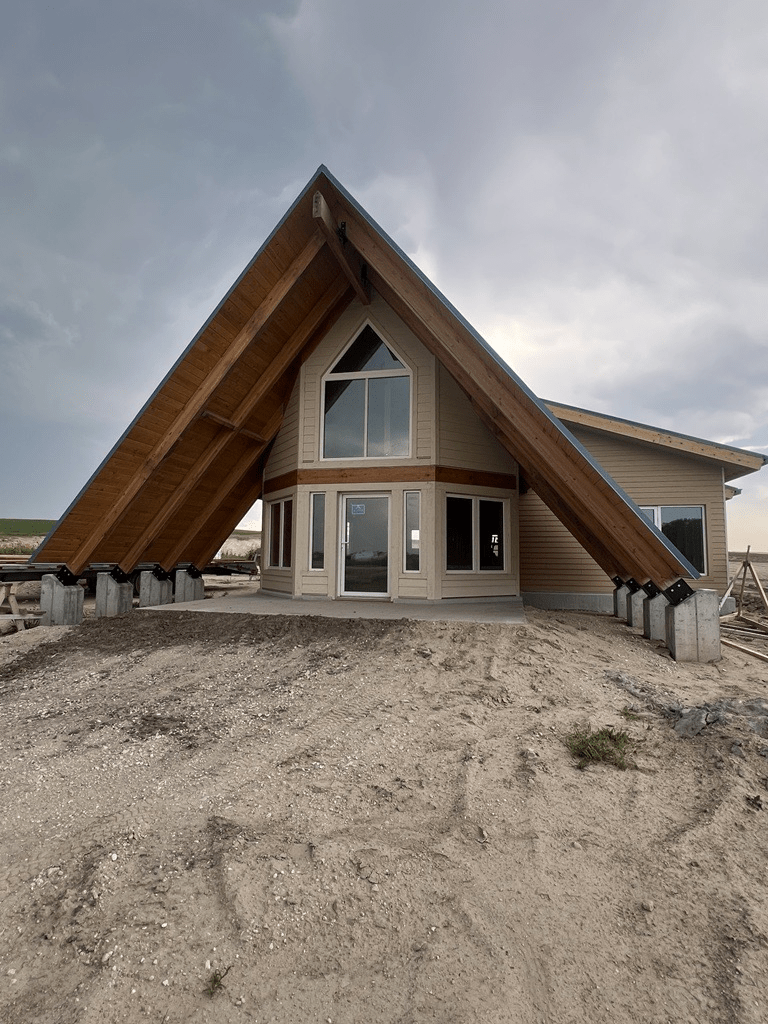
The homes, designed for durability and to include spaces for cultural practices, are located within a 590-acre community that includes agriculture, food production, native-language schools, and a solar and renewable micro-grid. After building two homes with funding from the Rosebud Sioux Tribe, the organization is seeking a construction loan for five additional homes in 2025. Noting that the area needs 2,000 new homes to meet the need, the group is seeking grants and partners for future housing development in 2026 and beyond.
Joining Hands to Break Down Barriers
During the gathering, attendees formed two concentric circles and joined hands for a traditional round dance. The circle moved clockwise around the room to a steady drumbeat, as attendees shared laughs and reflected on new connections, the event’s tone of optimism and opportunity, and the resilience of Indian Country.
“For too long we’ve talked about the issues, we’ve talked about the barriers and how hard it is,” Plummer said. “It’s time to start talking about the strength of Indian Country and what our partners are doing, the developments happening, and the ways we tap into that energy and really build the next wave of self-determination.”
